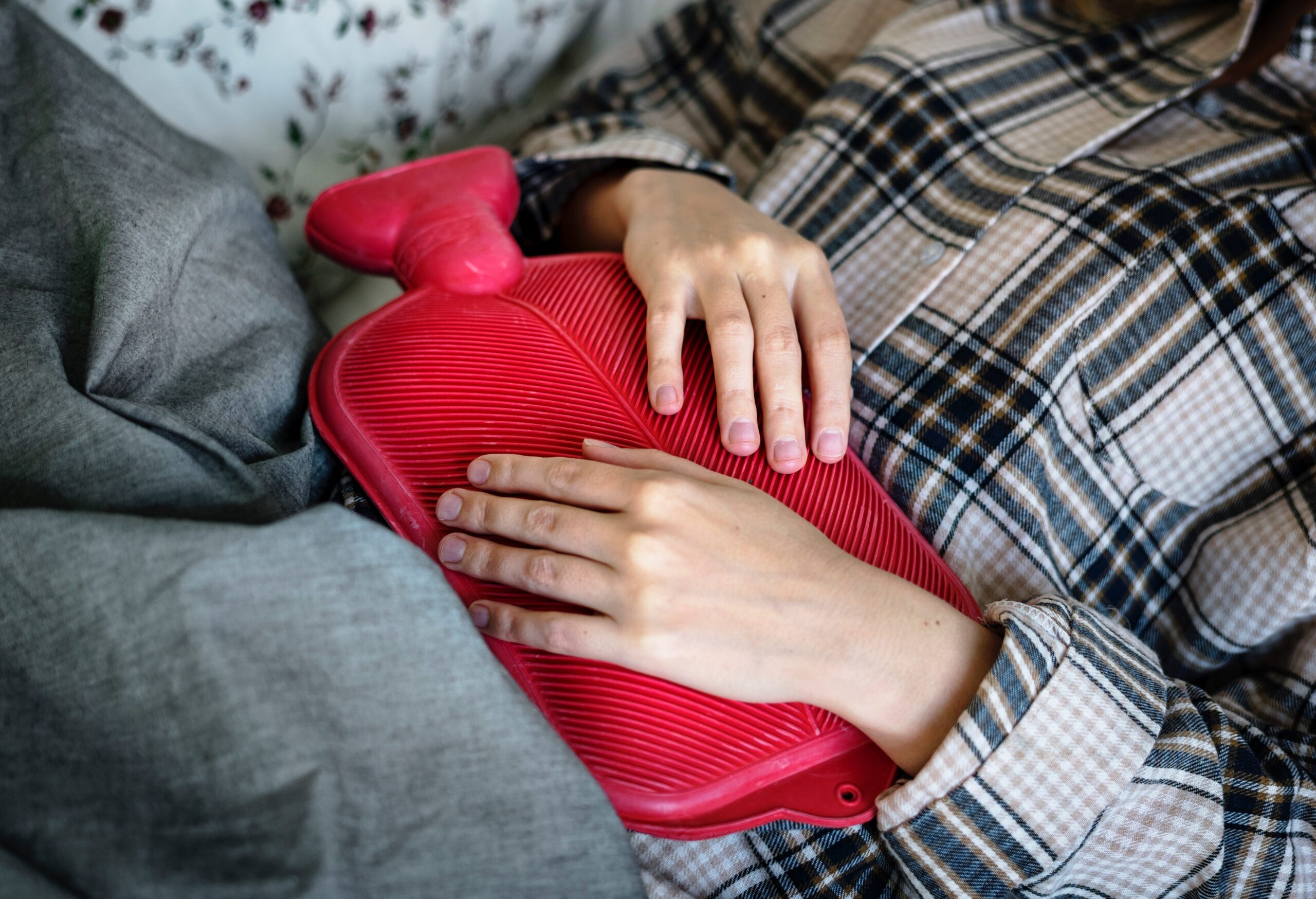Everyone sheds some hair every day—about 50 to 100 strands—but how do you know what’s normal? Speaking with Trueself, Penny James, a trichologist and stylist who owns the Penny James Salon in New York City, advises, “If you start to see more than that on your brush or pillow, or in your shower drain, then it’s excessive.” She says the hair is often a barometer of health and thinning hair can point to an underlying problem. Depending on the issue, once your hair has started to thin, it may not be reversible, so set up an an appointment with a specialist. Trichologists are trained in the science and care of the hair and scalp, but a visit to the OB/GYN or dermatologist might also be the way to go.
Getting to the root of the problem
For women under about the age of 45, combating hair loss could be as simple changing your styling habits. Do you brush your hair roughly? Blow dry every day or use heated styling tools? Even tight braids, extensions, and ponytails can cause alarming breakage, called “traction alopecia.” A good stylist or trichologist can help identify and correct the problem. Some medications such as antibiotics or oral contraceptives can also trigger reversible hair loss, so speak with your doctor about an alternative. Another biggie is diet. “Eat your protein!” says James. If none of those issues applies, you should ask your doctor to check your thyroid and vitamin and mineral levels checked.
There are specific supplements such as Biotin, a naturally occurring B Vitamin , or Viviscal, which contains silica (horsetail plant extract), Vitamin C, fish protein (as well as Biotin) marketed for healthy hair and nails. There is no 100 percent conclusive evidence that these work, although Doris Day, MD, a well known Manhattan dermatologist, calls the research on Viviscal promising. There is no harm in trying them, if you can afford to do so. Just remember you can’t supplement your way to gorgeous head of hair if your underlying diet is lacking.
Baby blues
For women who have just had a baby it can be a shock when that glossy, luxurious mermaid hair that grew in while you were pregnant suddenly starts falling out in clumps a few months after giving birth. When you are already feeling overtired and your only fashion accessory is the spittle on your blouse, this might seem completely unfair. It is, however, normal. Hair gets stuck in grow mode when you are pregnant and overcorrects to get back on cycle when your estrogen drops postpartum. Your hair should fill back out in six to twelve months, but if you are concerned, speak with your doctor.
Pesky Hormones
When women experience hormonal decline during perimenopause or menopause, it can trigger significant changes, including hair loss. For more on how menopause affects hair health, check out the Effects of Menopause on Hair Health to learn about the underlying causes and solutions. James says anemia is often overlooked and can be the cause of a thinning hairline. Be aware of any changes you may have noticed after going on a new medication. She also encourages middle aged women, who may be pulled in many directions by work and family obligations, to find ways to manage pamper yourself and relax. Significant hair loss can be stress-related and often corrects itself over time.
We associate baldness with men but due to a combination of genetics and age, most women will eventually experience some degree of hair loss called “androgenic alopecia.” As we age, our hair follicles become smaller and produce shorter, thinner hair. The growth cycle also slows down, so the hair we naturally shed doesn’t replace itself as often. These factors can lead to thinning, especially on the top of the head, and overall patchiness.
Minoxidil is the only regrowth drug that the FDA has approved safe for women. It may not restore a full head of hair, but some women do find it helps. On the down side, minoxidil can trigger allergic reactions, and higher concentrations may lead to hair growth in unwanted places. Although it’s available over the counter, it’s wise to work with a dermatologist to determine the right dosage and application method. Mousses tend to be better for women since liquids may drip and trigger facial hair to sprout.
Some dermatologists will also prescribe Finasteride, a drug used to shrink enlarged prostate, for female hair loss, but according to research by the National Institutes of Health the verdict is still out on its effectiveness. The drug can also cause birth defects in male fetuses so if there’s any chance you might get pregnant, forget it.
Hair Care and Styling to Prevent Loss
James recommends letting your hair dry naturally and avoiding other heated styling tools as much as possible. One myth that James likes to dispel is that you shouldn’t shampoo often. “Let me ask you this,” she says. “Would you go without washing your face regularly?” She points out that the scalp needs to be gently cleansed, about four times a week, to stay in optimal shape. “I can hear women with tight, curly hair groaning,” she jokes. There are many excellent gentle cleaning products on the market that don’t contain harsh chemicals. According to Richard Corio, owner of Barber and Brew hair salon, “Products that contain chemicals will give you immediate results, but will dry your hair out in the long run.” He suggests using Malin and Goetz, or Aveda.
If you like to color your hair, James says a good stylist should be able to assess whether or not your hair can cope with a particular product. Did your stylist fry your hair with bleach or heat? “There are thousands of excellent stylists out there!” says James. “Find someone who listens to you.”
For African American women troubled by hair loss and breakage, she recommends the ALODIA line of all-natural products which she distributes at her salon. “I’ve found everything else to just be a band aid.”
“If you are not sure what is going on with your scalp or hair, make an appointment with a Trichologist,” says James. Many Trichologists are also trained stylists so they can also recommend a style and cut to work with whatever type of hair you have. For more information and to locate a professional near you, go to the website of the International Association of Trichologists.
Read more about some of the best products for dry or damaged hair here.











